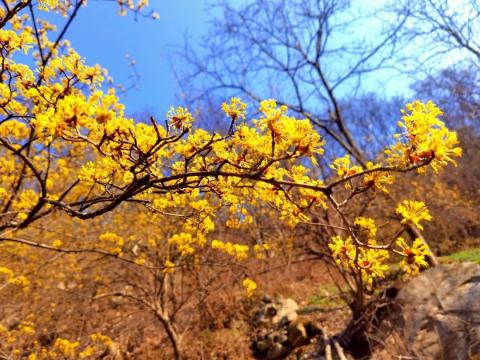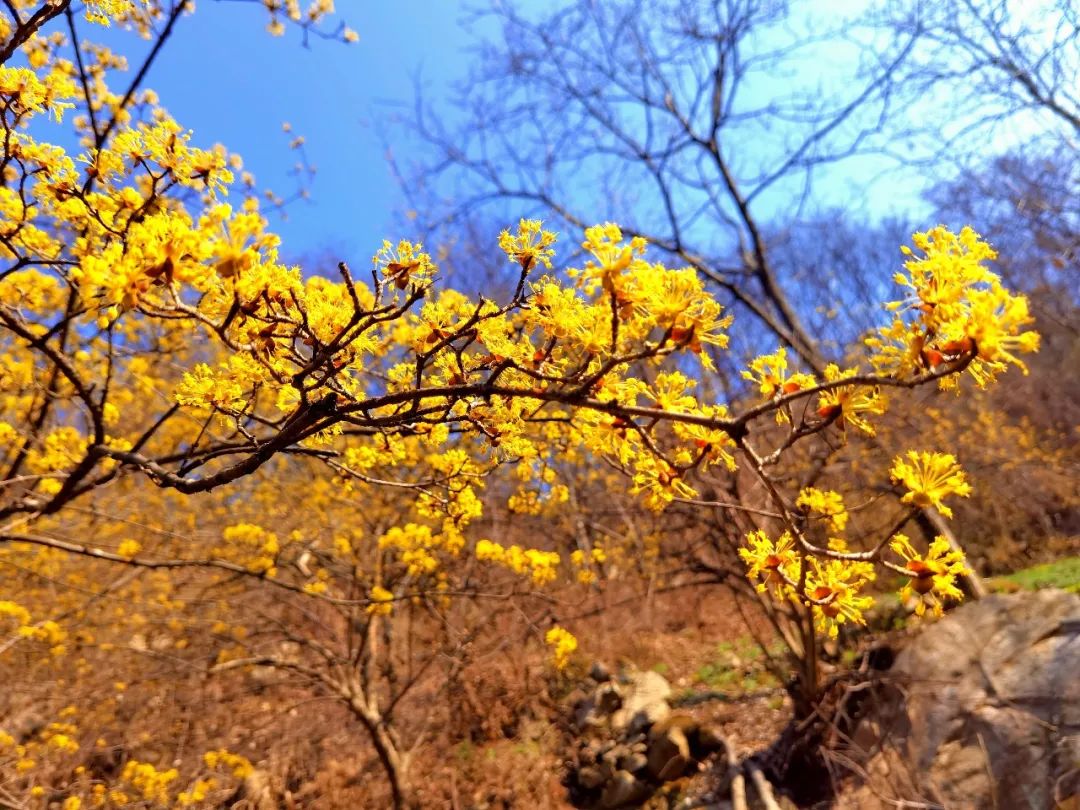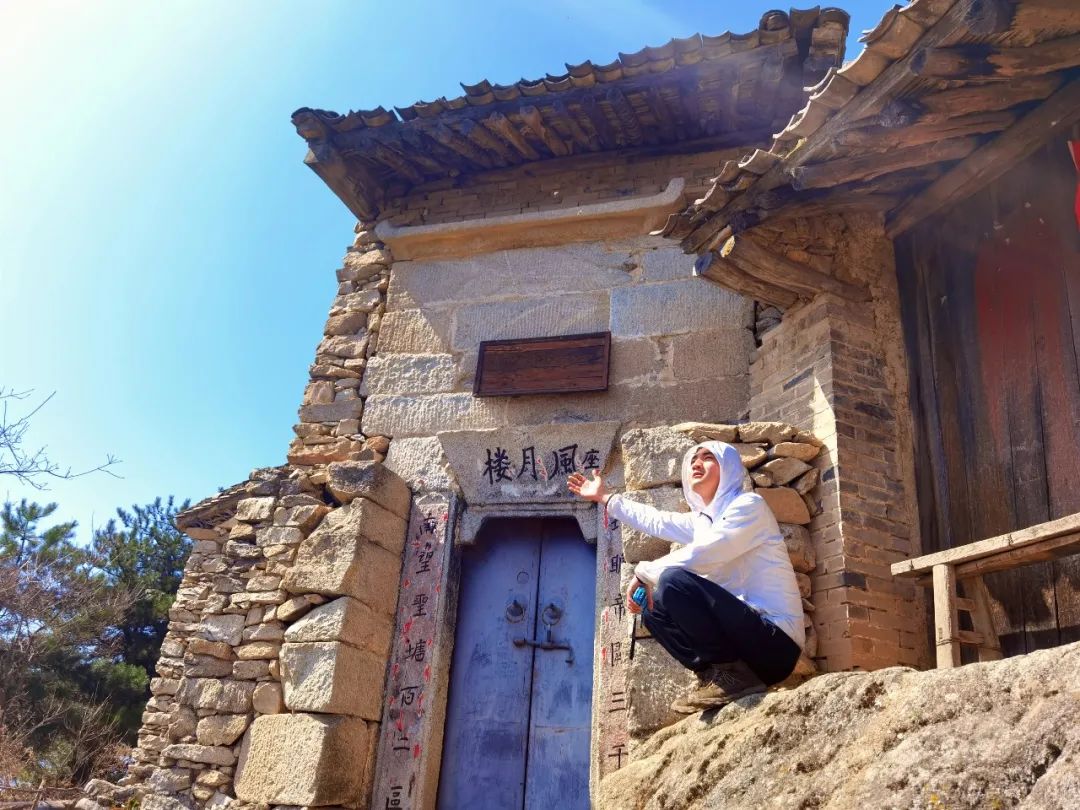
March and April are the world of flowers and brother. In spring, everything revives. As long as you go into the mountains, you can see trees sprouting and blooming everywhere. Today I was lucky enough to come to Yunji Temple to check in. However, Yunji Temple, which is like walking on the ground, is too leisurely for my brother. Unfortunately, I forgot to bring hot pot milk tea. It is quite a pity for the leisure route.




Yunji Temple belongs to the Wanhua Mountain Scenic Area. It belongs to the same area and the same top as Wanhua Mountain. Although we are walking on a wild mountain and not a scenic area, there are introductions to the Wanhua Mountain Scenic Area everywhere along the way. Brother, I also have one The question is, if I climbed Yunji Temple, does that count as a check-in to Wanhua Mountain?




After climbing a lot of mountains, I have always had the idea of retreating to the mountains and forests, haha. So after going down the mountain today, I also had a real idea, that is, go to Yunji Temple and live in Wangyue Tower, one person on the mountain, and look at the moon every night from now on, thinking about the unforgettable things, and no one will disturb me for the rest of my life. How wonderful would it be to be in a daze, drink tea during the day, and look at the moon or stars at night? Maybe it will come true one day, who knows?




Yunji Temple, a Chinese Buddhist temple. It is located on the top of Yunji Mountain deep in the Taiping Valley of Zhongnan Mountain, 35 kilometers southwest of Xi'an, Shaanxi Province. Yunji Mountain was originally named Wanhua Mountain, with a peak altitude of 1,917 meters. When you climb this peak, you will see white clouds lingering at your feet and a myriad of scenes. Therefore, it has also been called Yunji Mountain since the Tang Dynasty.




Yunji Ancient Temple was first built in the reign of Wei Wu and was originally named "Juxian Pengri Temple". Emperor Wu of the Northern Zhou Dynasty abolished Buddhism and the temples were destroyed. In the first year of Renshou in the Sui Dynasty (601), the temple was rebuilt and the old name was still used. In the Tang Dynasty, Suishan was renamed "Yunji Temple" and the temple reached its peak. Many famous Chinese and foreign monks lived in the temple to practice Taoism and spread Buddhism. During the Zhenguan period (627-649), Ci Zang, a Buddhist monk from Silla, once lived in a hut on the east cliff of the temple. He not only practiced Taoism, but also gave ordination to monks and laymen near and far. During the reign of Emperor Gaozong of the Tang Dynasty, Yuan Chi first went to Yunji Temple to stay for a short time. Soon after, he went to live in a room 15 kilometers away from the temple and "quietly" for eight years. Then he was invited to return to Ximing Temple to spread the knowledge of knowledge only.




The buildings on the top of the peak from north to south include: the Suzi Bodhisattva Hall, the three Ksitigarbha Bodhisattva Halls, the five corner towers at the highest point, the Fengyue Tower (two floors) facing east, the north and south wing rooms, the west main A courtyard composed of palaces. There is a "Nuan Pavilion" in the corner building, which is one of the "three wonders" of Huxian architecture. It houses the five Bodhisattva statues of Manjusri, Samantabhadra, Avalokitesvara, Maitreya and Ksitigarbha. Fengyue Tower has two floors, built with granite strips and a Bagua stone roof. The three characters "Fengyue Tower" are engraved on the outside of the door. There are two couplets on the left and right. This building may be a relic of the Tang Dynasty architecture. It has undergone many changes over time. Some cultural relics were destroyed. There is a big bell from the Ming Dynasty, an iron stele and a Fengyue Tower.



Walk along the Sanqiao Yukuo Road against the stream for 5 miles in the gorge, up to the wild mountains, with tall and tall pines, and the shade of the trees; at the top of the Yunji Temple, you can see the faint fairy wind and the ancient bells. The reed catkins are floating, the bamboo forest is flowing, and the temples and ancient temples are very majestic when you climb up and look into the distance.


The guide for Yunji Temple is that it is inside Sanqiao Valley. You need to go to Taiping Valley first. The bus can only go to the entrance of Sanqiao Valley. You need to take a shuttle bus to the trailhead. However, if you drive by yourself, it will not affect you. You can drive to Laowan. Park the car at Mizogokou and start climbing. The conventional walking method is an O-shaped crossing, Sanqiao Valley → Loess Cliff → Oak Mountain Temple → Yunji Temple → Oak Mountain Temple → Caochanggang → Laowangou-Sanqiao Valley.




At the beginning, you need to go up the mountain on the left hand side. You can go all the way to the top and then go down the mountain. To go down the mountain, you need to pass Oak Mountain Temple first. After walking down for a while, there is a fork in the road. You can choose to go back or choose an O-shaped crossing. Go to the right when going down the mountain. You can return the same way by turning the side, and you can cross by turning the left side. However, the crossing route is in disrepair and many single-plank bridges have been broken. It is recommended that novices and newbies with non-slip shoes not try it easily.




Of course, the guide is not for everyone to act alone, nor is it for everyone to blindly enter the mountain without knowing the conditions on the mountain road. There are risks in the outdoors, so climb and cherish it. It is recommended that you make an appointment with Lao Donkey and find a tour leader when traveling, so that you can enter and exit the mountains safely. Of course, you can also ask me to be your private tour guide, or you can set out with my brother’s boutique tour. Let’s go on the road together and become a contemporary non-famous person. For lamps that are not fuel-efficient, you are also welcome to join the group via private message and come to this contemporary gathering place for famous lamps that are not fuel-efficient.




